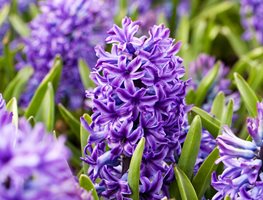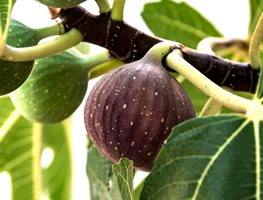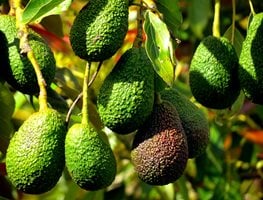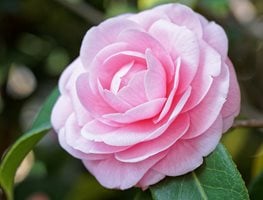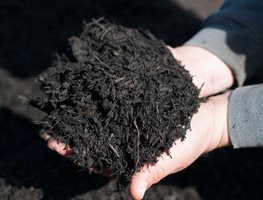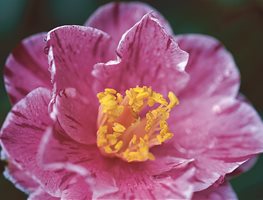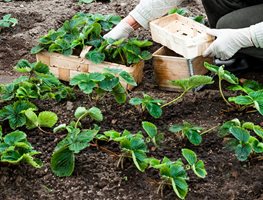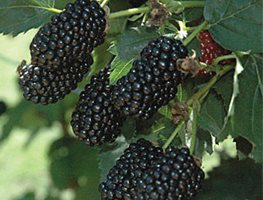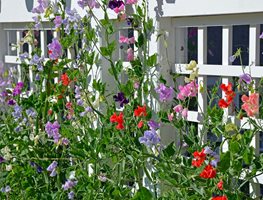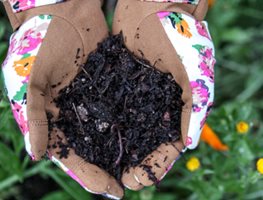10 Gardening Activities for September in Southern California
Here are a few garden reminders, inspiring ideas, and maintenance suggestions for this month.
1. Shop for Bulbs, Corms & Tubers
Though you won’t be planting bulbs in Southern California until late-October through mid-December, it’s a good time to shop for and buy bulbs. If you wait until December, you may have trouble finding quality bulbs in stores and many of the best varieties sold online may be picked over or sold out. A number of bulbs such as tulips, hyacinths, muscari, and some daffodils require a chilling period to perform at their best. If you live in a warm climate that doesn’t get cool weather, then consider buying pre-cooled bulbs (plant them as soon as possible to preserve the chill effect). Another option is to buy bulbs that perform well in warm climates.
2. Cut Back Fig Trees
Fig trees can be cut back after the last crop harvest. Figs will not continue to ripen after they are picked, so wait to harvest until they are fully ripe. You’ll know they’re ripe when the fig starts drooping down instead of growing perpendicular to the branch it’s growing on. The fig should also be soft. Some figs that are ripe may start to split at the top. To harvest, use clippers to cut off the fig at the branch and be sure not to rip the fleshy part of the fig (this will cause it to go bad faster). If you don’t have a fig tree, try planting Brown Turkey or Desert King.
3. Care for Your Avocado Trees
Avocados may drop more leaves than usual this month; but don’t worry, this is normal. Continue your deep-watering schedule to provide ample water, but make sure the soil doesn’t get soggy. Mulch the root zone of avocado trees or leave leaf litter to decompose. Mulch and leaves help keep the roots cool, which avocado trees prefer. Avocados won’t ripen on the tree, so pick them when they are the right size (size at maturity depends on the variety) and let them ripen indoors.
4. Continue Watering Flowering Shrubs Well
In Southern California, the heat doesn’t stop when the calendar says summer is over. As long as it’s hot, keep watering flowering shrubs such as camellias, lilacs, hydrangeas, rhododendrons, and others. If plant roots dry out too much, the next flowering season will be affected. It also helps to top dress shrubs with a layer of compost and mulch to keep roots cool.
5. Prepare for Fall Planting
The ideal time to plant in Southern California is in fall when rain is expected. This may not happen until October or even November, but you can prepare for planting now. Cover planting beds or areas you want to refresh with a 2- to 4-inch layer of compost from a local garden center or some you've made yourself. Instead of digging the compost into beds, use a broad fork to loosen and aerate the soil. This will maintain the integrity of the soil and also allow for better water drainage as well as root penetration.
Don't miss what to do in the garden each month, make sure you're getting our weekly newsletter.
6. Plant Now
Plant eye-catching agaves in a spot that receives plenty of sun in the garden and be sure to water once or twice a week until established. Make sure that no part of the leaf rosette is covered with soil, which can cause rotting.
Stagger plantings of early, mid- and late varieties of camellias and you can have flowers from November through April (or even May!) If you’re in a really hot climate, plant where they are protected from bright light or leaves may be scalded by the sun.
Providing year-round interest, crape myrtles are very resilient, love the sun, and are extremely heat tolerant. When planting, dig a hole twice as wide and just as deep as the container. Stake if needed and water thoroughly after planting.
7. Transplant Strawberries
By mid-September you can transplant starts of most varieties of strawberries (this can also be done in the spring around March or April). Strawberries are a great crop for both kitchen gardens and container gardens. When planting be sure to get the depth correct—don’t bury the crown of the plant. If you already have a berry patch, consider lifting your healthiest plant and replanting it in another area of your garden to expand your production. Allow runners to spread if you have the space. Try an ever-bearing variety such as Berried Treasure® Red, or others from Burpee.
8. Plant Blackberries
Blackberries are a wonderfully delicious fruit that are easily, though sometimes painfully, grown in home gardens. Dealing with thorns when cutting back canes requires a certain toughness, though thornless blackberry varieties are being introduced. Planting blackberries can start in mid-September and continue well into October. Order blackberries online from retailers such as Burpee or visit your local nursery. Many blackberries need support so build a trellis using u posts and wire. Tie canes as they grow using plant ribbon.
9. Start Sweet Pea Seeds
Sweet peas are one of the most beautiful, fragrant, and easy-to-grow flowers. Plant sweet pea seeds in a flat in the fall (learn how to plant sweet peas in this video). In areas with mild winters, transplant seedlings into the garden in October or November. Be sure you plant seedlings in well-draining and fertile soil. Amend the soil with compost and organic material. Renee's Garden has a wide selections of sweet pea seeds.
10. Online Learning
Go back to “garden school” this fall with online gardening courses taught by talented experts in their respective fields. Categories include gardening basics, garden design tips (like how to create a sustainable flower garden, deer-resistant design, or small garden design), container gardening, all about plants (like houseplants, aquatic gardens, hydrangeas, plants for the shade, perennials, and more), and edible gardening courses.
If you enjoyed this information, sign up for our weekly newsletter. Each week, you'll get Garden Design's best delivered right to your inbox including design tips, plant picks, great gardens, outdoor living products, and events to enjoy — along with monthly gardening checklists just for your area.
Do you know someone who would enjoy this Southern California Region gardening information? Why not share it with them?
When you purchase products through links on our site, we may receive an affiliate commission. Thank you for your support.
